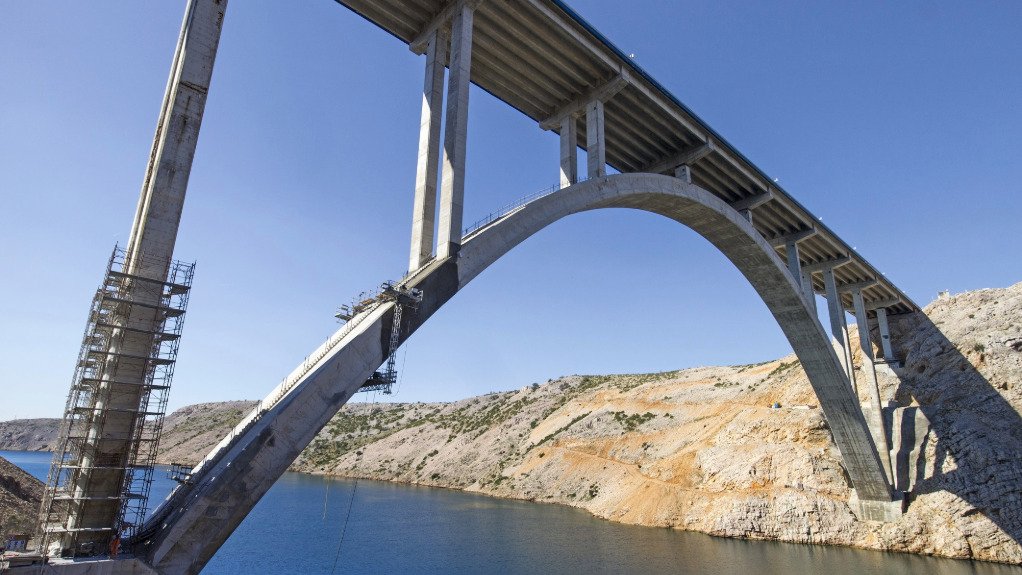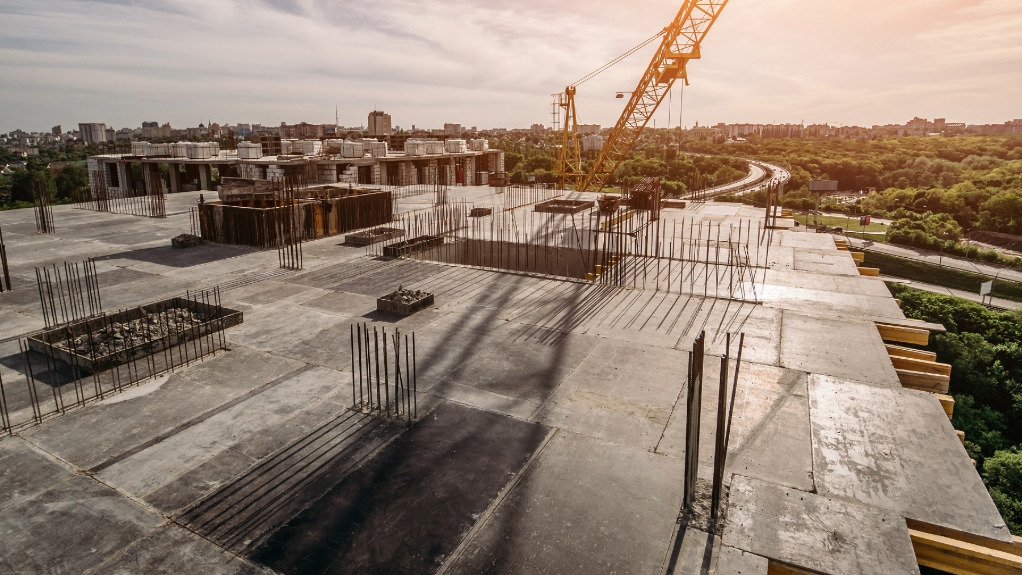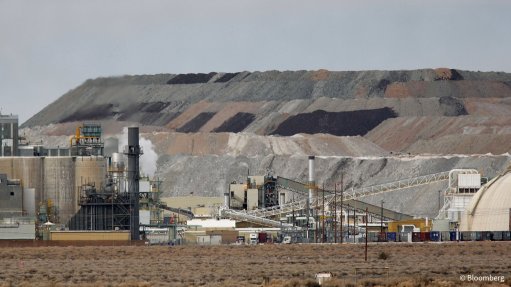Cost-effective corrosion technology excels in harsh climates



REINFORCED FROM WITHIN MCI technology protects structures from corrosion including increased activity in coastal areas, salt-laden air, chloride presence or high water tables
LONG LASTING MCI admixtures offer long-term performance to achieve the required service life
Corrosion control specialist Cortec’s migrating corrosion inhibitors (MCIs) technology offers a cost-effective solution to extend structural service life in high-temperature areas, such as those in Gulf Cooperation Council (GCC) countries, says Cortec public relations manager Ana Juraga.
The high temperatures and harsh conditions in such countries accelerate corrosion, threatening the durability of reinforced concrete, with corrosion activity doubling with every 10 °C rise in temperature.
Coastal areas, salt-laden air, chloride presence in sabkha soil or high water tables exacerbate the issue.
Consequently, the “strong cultural desire” to create sustainable structures for the next generation is affecting MCI solutions positively, as they are gaining popularity in the GCC, owing to ease of application, competitive pricing, environmental sustainability and proven effectiveness, Juraga explains.
However, broader adoption is hindered by limited industry awareness, project decision-makers focusing on short-term financial goals and the lack of policies that mandate longer service-life requirements, she notes.
How MCI Can Help
MCIs combat corrosion in reinforced concrete structures and using them – at a small percentage of construction costs – enables engineers to significantly extend a structure’s service life, says Juraga.
She explains that amine-carboxylate-based inhibitors affect the anodic and cathodic portions of a corrosion cell and can be applied in many forms, including concrete admixtures and topical treatments.
An MCI can migrate through the concrete matrix as a liquid through capillary action and as a vapour throughout the pore structure. This enables the MCI molecules to adsorb on the surface of metal reinforcement, forming a protective layer that not only delays corrosion but also significantly reduces corrosion once it has started.
MCI admixtures are easy to apply and offer long-term performance to achieve the required service life.
Cost-Effective Alternative
MCIs are a viable alternative to expensive options, such as epoxy-coated rebar and thick concrete covers, in addition to being more cost effective than epoxy-coated rebar, cathodic protection and calcium nitrite.
The inhibitors do not require extensive maintenance or inspections, resulting in lower labour costs and quicker completion time.
In addition to being more expensive, conventional technologies require assurance of proper adhesion and coverage, as a premature failure could occur, which leaves the reinforcement vulnerable to accelerated corrosion.
While epoxy coating is a physical barrier, MCIs adsorb to the metal to form a nanoprotective layer. Therefore, excess MCIs in the concrete can replenish the protective layer on the steel surface, whereas the epoxy coating is stationary and cannot self-replenish when breaks and blemishes form in the coating.
“In the GCC, users who opted to switch from epoxy-coated bars to MCI admixtures were able to cut down the cost of material by one-third to a half of the cost of epoxy, depending on the market and the density of rebar per concrete volume,” says Juraga.
Conversely, cathodic protection systems are complex and require careful design, installation, and ongoing monitoring and maintenance. They have a high initial cost, compared to that of MCIs, owing to the significant costs associated with them.
Further, cathodic protection systems could potentially interfere with other systems or structures nearby, such as underground utilities; they may not be compatible with all concrete structures or environments; and they have environmental impacts to consider, owing to potentially toxic metals, such as zinc, in the anodes.
MCI Application
MCIs can be applied to new structures as concrete admixtures, such as bio-based MCI-2005, which does not accelerate set time.
Existing structures can benefit from MCI-2020, applied during the repair or routine application of a water repellent. It offers high surface-applied corrosion inhibitors concentration and should be sealed with a water repellent.
For dual protection and the convenience of a two-in-one application, Cortec offers the MCI-2018 which comprises MCI with a silane water repellent, Juraga highlights.
She notes that there are several factors to consider when determining the complexity of an application. This includes the level of surface preparation required before applying an MCI, which can influence the invasiveness of the process.
When concrete surfaces are delaminated, spalled or have existing coatings on them, significant cleaning or preparation may be necessary to achieve the required surface profile. Surface preparation for newer structures with sound and clean concrete surfaces is less demanding.
Additionally, the application method can also affect the level of disruption. Surface application methods, such as spraying or brushing, require minimal disruption, while methods that involve drilling or injecting into the structure could be more destructive and complex.
MCI technology has been used in numerous structures in the GCC, including the Burj Khalifa skyscraper, in Dubai, in the United Arab Emirates, which incorporated MCI-2005 in its substructure for enhanced protection against harsh groundwater conditions. This application was similar for the Princess Tower, also in Dubai, doubling its service life prediction at a minimal cost.
Article Enquiry
Email Article
Save Article
Feedback
To advertise email advertising@creamermedia.co.za or click here
Announcements
What's On
Subscribe to improve your user experience...
Option 1 (equivalent of R125 a month):
Receive a weekly copy of Creamer Media's Engineering News & Mining Weekly magazine
(print copy for those in South Africa and e-magazine for those outside of South Africa)
Receive daily email newsletters
Access to full search results
Access archive of magazine back copies
Access to Projects in Progress
Access to ONE Research Report of your choice in PDF format
Option 2 (equivalent of R375 a month):
All benefits from Option 1
PLUS
Access to Creamer Media's Research Channel Africa for ALL Research Reports, in PDF format, on various industrial and mining sectors
including Electricity; Water; Energy Transition; Hydrogen; Roads, Rail and Ports; Coal; Gold; Platinum; Battery Metals; etc.
Already a subscriber?
Forgotten your password?
Receive weekly copy of Creamer Media's Engineering News & Mining Weekly magazine (print copy for those in South Africa and e-magazine for those outside of South Africa)
➕
Recieve daily email newsletters
➕
Access to full search results
➕
Access archive of magazine back copies
➕
Access to Projects in Progress
➕
Access to ONE Research Report of your choice in PDF format
RESEARCH CHANNEL AFRICA
R4500 (equivalent of R375 a month)
SUBSCRIBEAll benefits from Option 1
➕
Access to Creamer Media's Research Channel Africa for ALL Research Reports on various industrial and mining sectors, in PDF format, including on:
Electricity
➕
Water
➕
Energy Transition
➕
Hydrogen
➕
Roads, Rail and Ports
➕
Coal
➕
Gold
➕
Platinum
➕
Battery Metals
➕
etc.
Receive all benefits from Option 1 or Option 2 delivered to numerous people at your company
➕
Multiple User names and Passwords for simultaneous log-ins
➕
Intranet integration access to all in your organisation




















